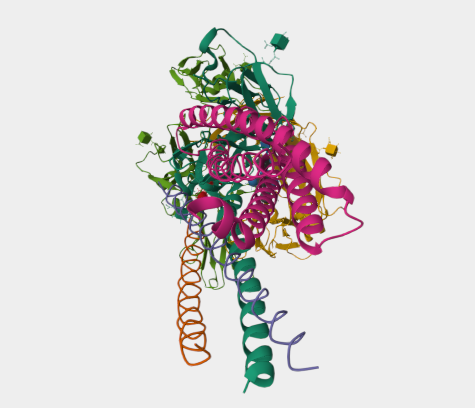Key features and details | |
Cat. No. | MABL-1949 |
Name | Anti-IgE mAbs |
Clone No. | AFD- R1E4 |
From | Recombinant Antibody |
Isotype | Engineer antibody |
Application | ELISA, FC |
Species Reactivity | Mouse |
Basic Information | |
Specificity | This antibody is specific for murine IgE. It does not react with other classes of mouse immunoglobulin including IgD, IgG, IgA, or IgM. IgE plays an essential role in type I hypersensitivity (allergic responses such as hay fever, asthma, hives, anaphylatic shock) by binding to Fc receptors on basophils and mast cells. Crosslinking of IgE bound to Fc receptors induces degranulation of mast cells and basophils that promote allergic manifestations. IgE is also functionally important for immunity against parasites. |
Alternative Name | Immunoglobulin E |
UniProt | P06336 |
Immunogen | This antibody was generated in rat against murine IgE in adjuvant. |
Application Notes | In the original study, this antibody and other clones (C12B9, 23G3, and B1E3) of the monoclonal anti-mIgE antibodies were used in conjunction with the recombinant chimeric mIgE-human IgG1 molecules (Keegan et al., 1991). It has been demonstrated that the Cϵ3 domain is important in the binding of mIgE to the murine B cell FcϵRII as well as to the murine mast cell FcϵRI (Keegan et al., 1991). Also, while the Cϵ4 domain had no effect on binding to the FcϵRI, the presence of the Cϵ4 domain influenced the binding of the recombinant IgE to the FcϵRII (Keegan et al., 1991). This antibody blocks IgE binding to mouse or rat FceRI and can be used in mouse IgE ELISA. In addition, this antibody could be used, for instance, to develop a flow cytometry assay for the identification and differentiation of chemicals with the potential to elicit irritation, IgE-mediated, or T cell-mediated hypersensitivity responses (Manetz et al, 1999), or to study the kinetics of the ligand-IgE interaction (Posner et al., 1992). |
Antibody First Published | Keegan et al. Characterization of new rat anti-mouse IgE monoclonals and their use along with chimeric IgE to further define the site that interacts with Fc epsilon RII and Fc epsilon RI. Mol Immunol. 1991 Oct;28(10):1149-54. PMID:1717839 |
Note on publication | Describes the original generation of this antibody and its subsequent characterisation to further define the site that interacts with Fc epsilon RII and Fc epsilon RI. |
COA Information (For reference only, actual COA shall prevail) | |
Size | 100 μg Purified antibody. |
Concentration | 1 mg/ml. |
Purification | Protein A affinity purified |
Buffer | PBS with 0.02% Proclin 300. |
Concentration | 1 mg/ml. |
Storage Recommendation | Store at 4⁰C for up to 3 months. For longer storage, aliquot and store at - 20⁰C. |



